2011
Book edition of 70 copies
Book + lamp edition of 50 copies
All books signed and numbered
Book edition of 70 copies
Book + lamp edition of 50 copies
All books signed and numbered
Book: 30×40 cm
11.8×15.7 in.
Lamp: 47×31 cm
18.5×12.2 in.
11.8×15.7 in.
Lamp: 47×31 cm
18.5×12.2 in.
Silkscreen printed hard cover
Tracing paper with 4 color printing
Atoma binding
Spun aluminum lamp
Tracing paper with 4 color printing
Atoma binding
Spun aluminum lamp
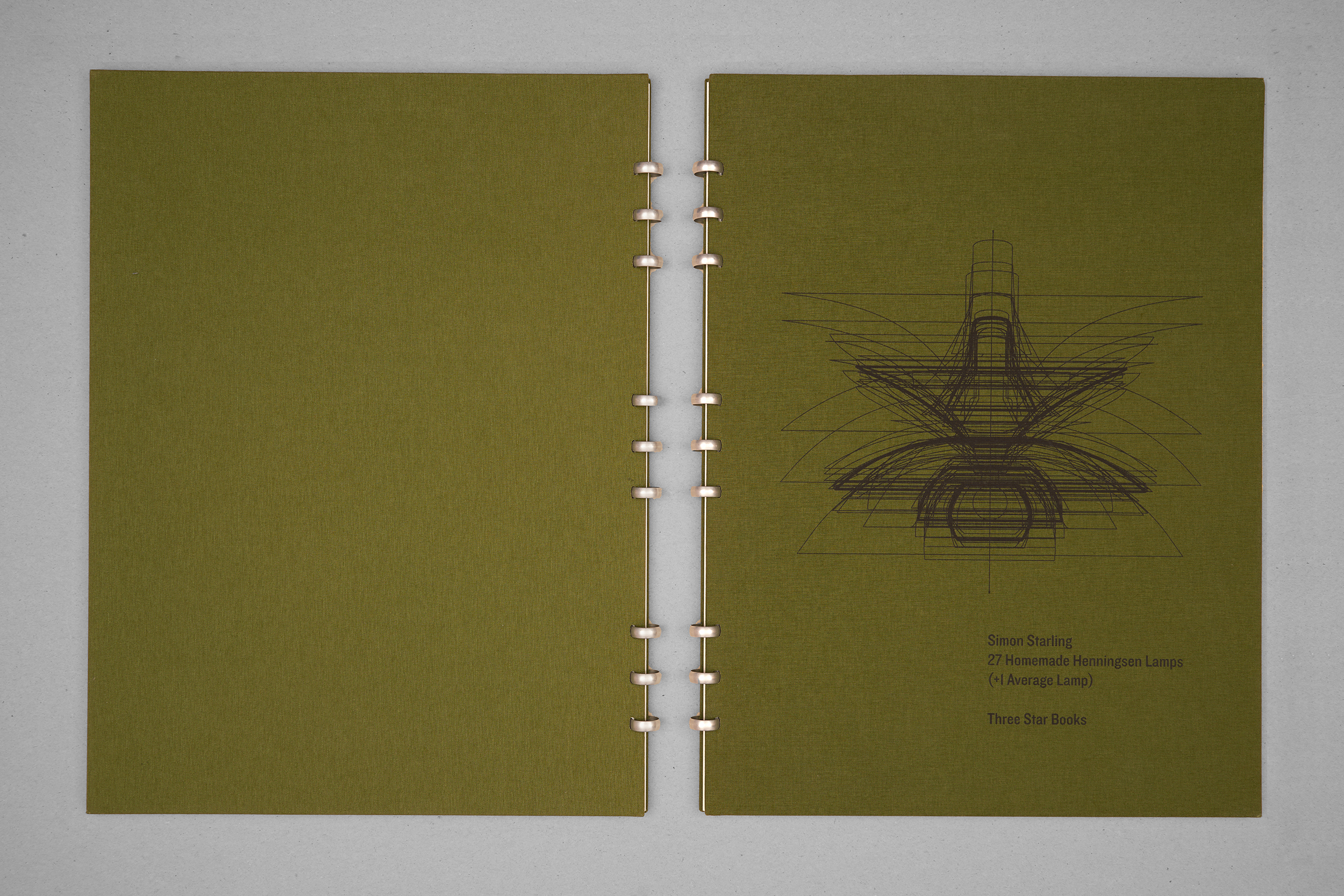
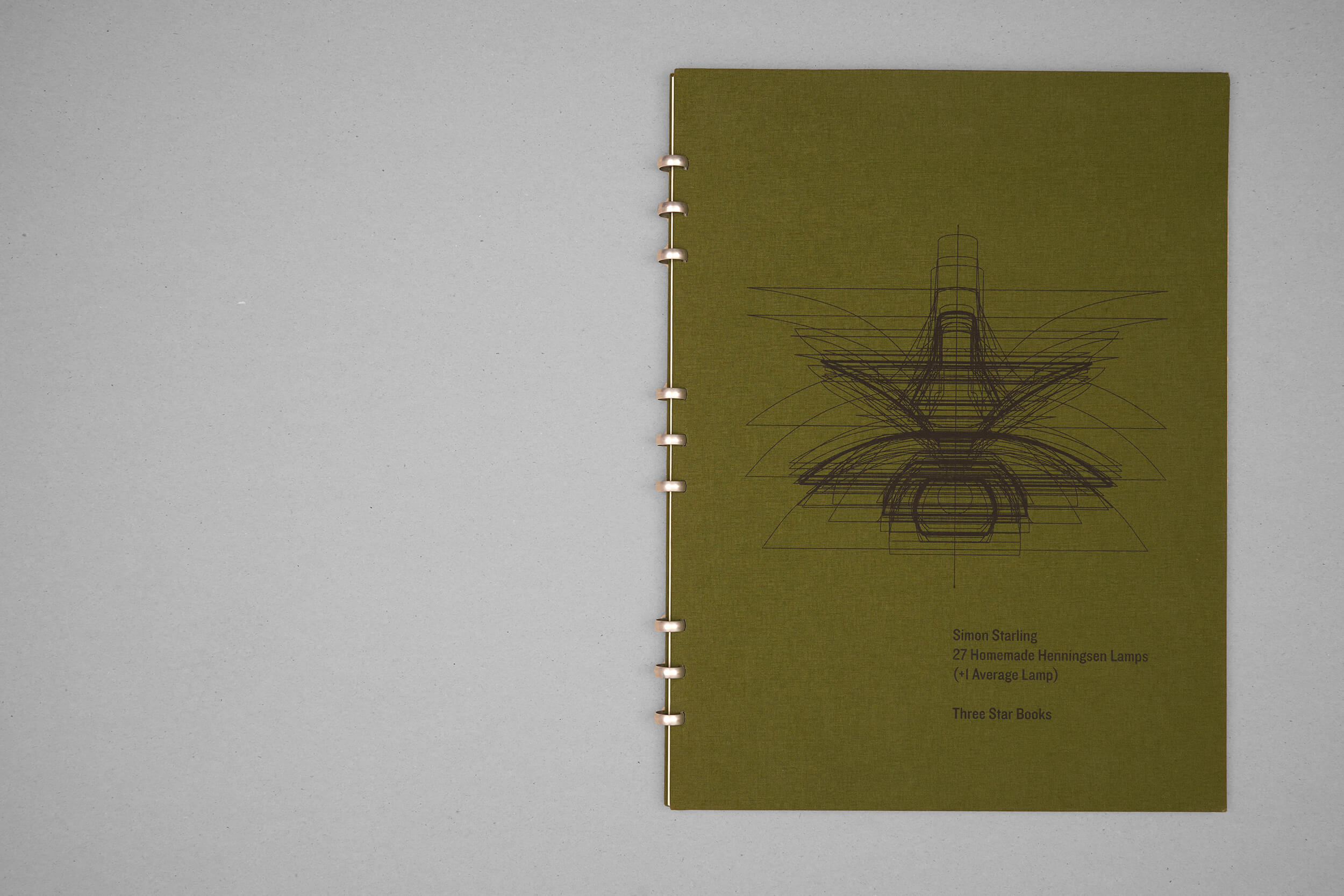
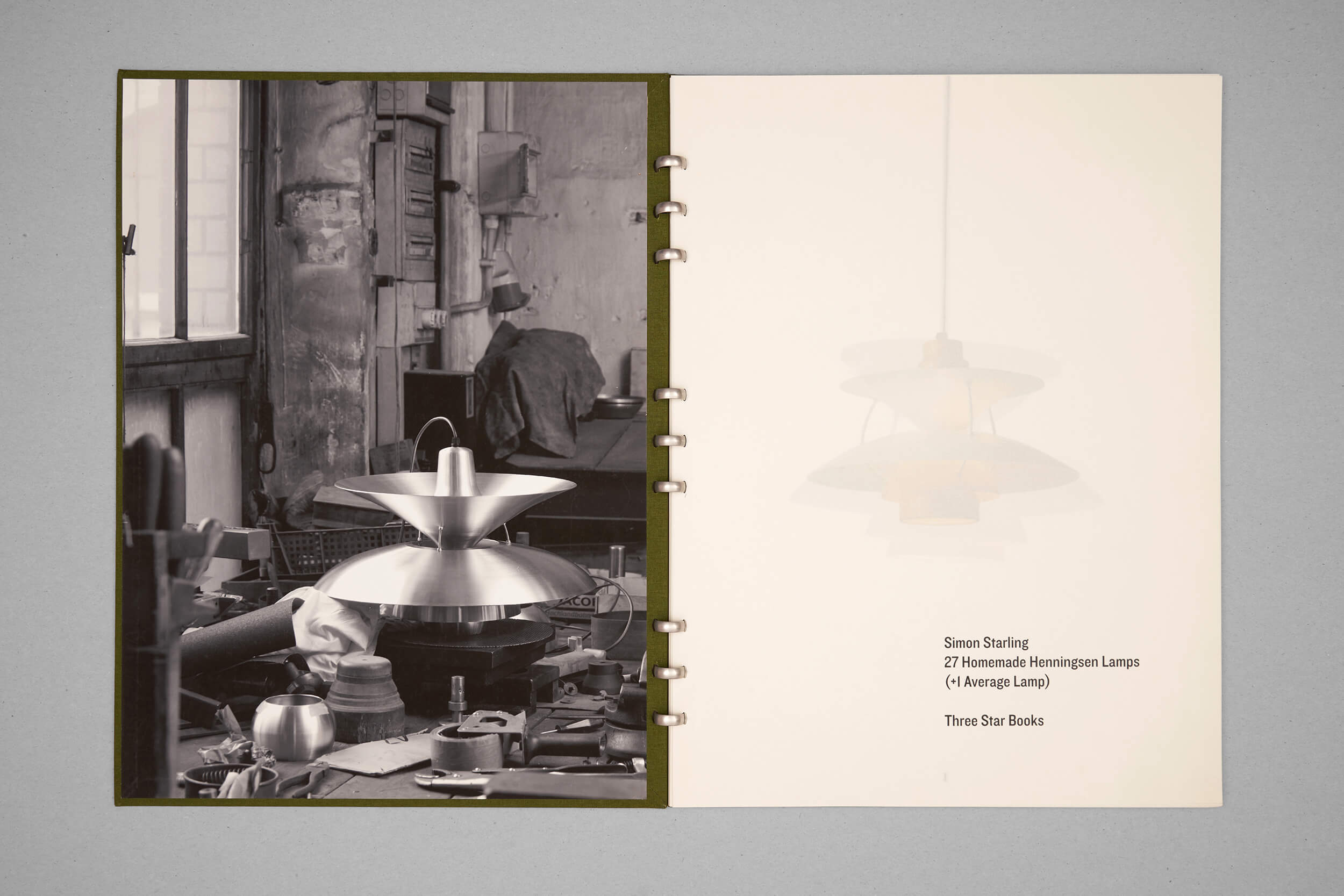
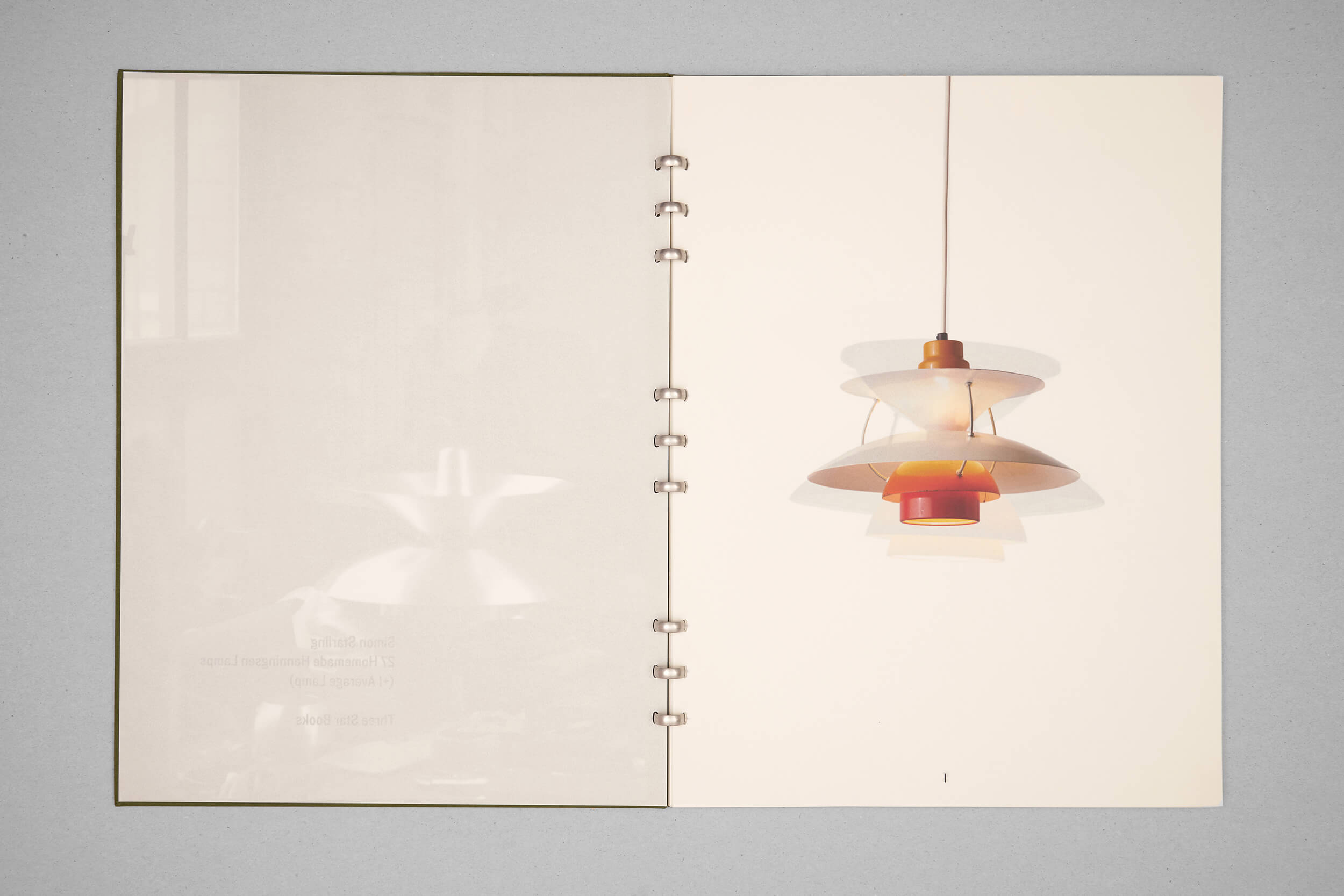
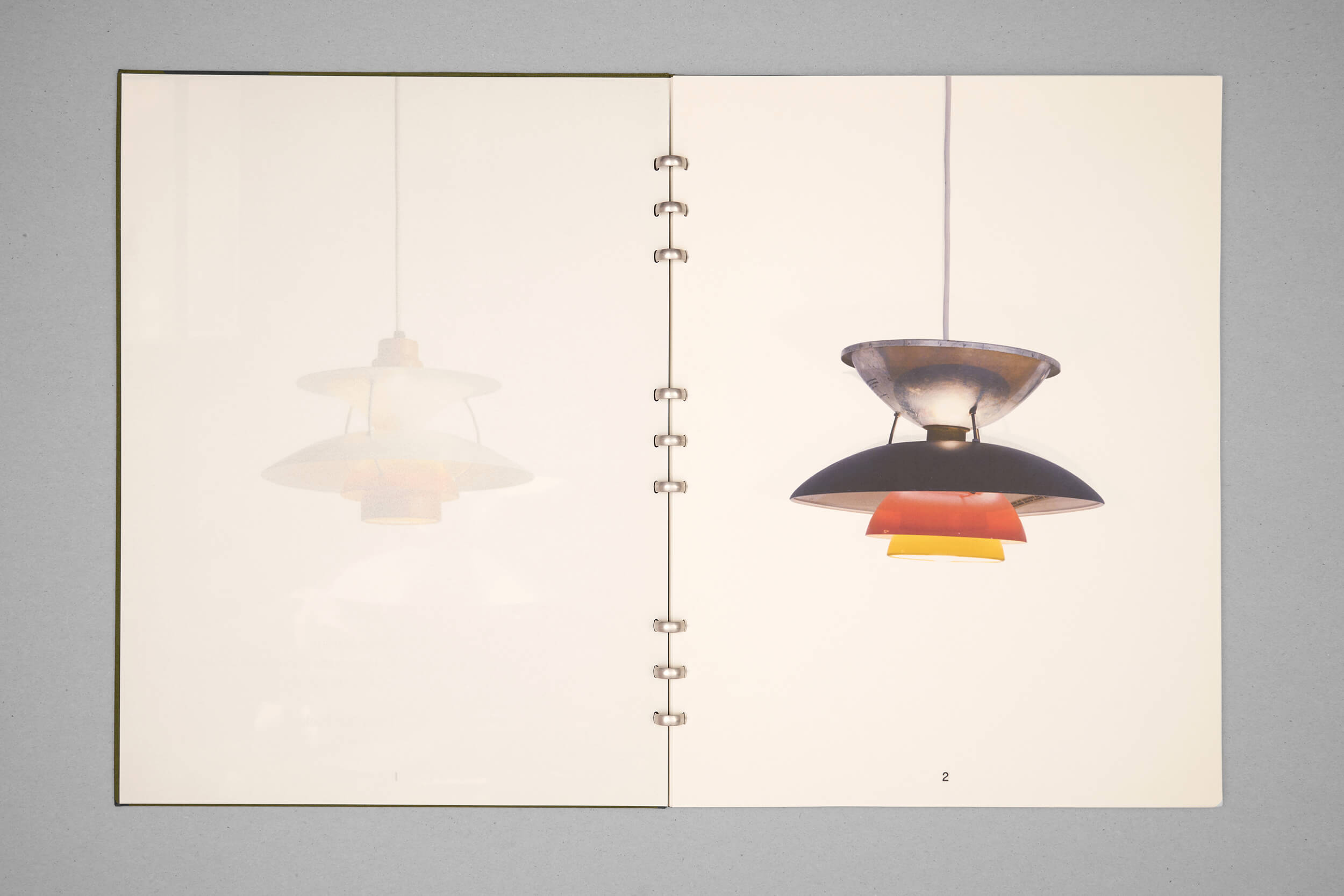

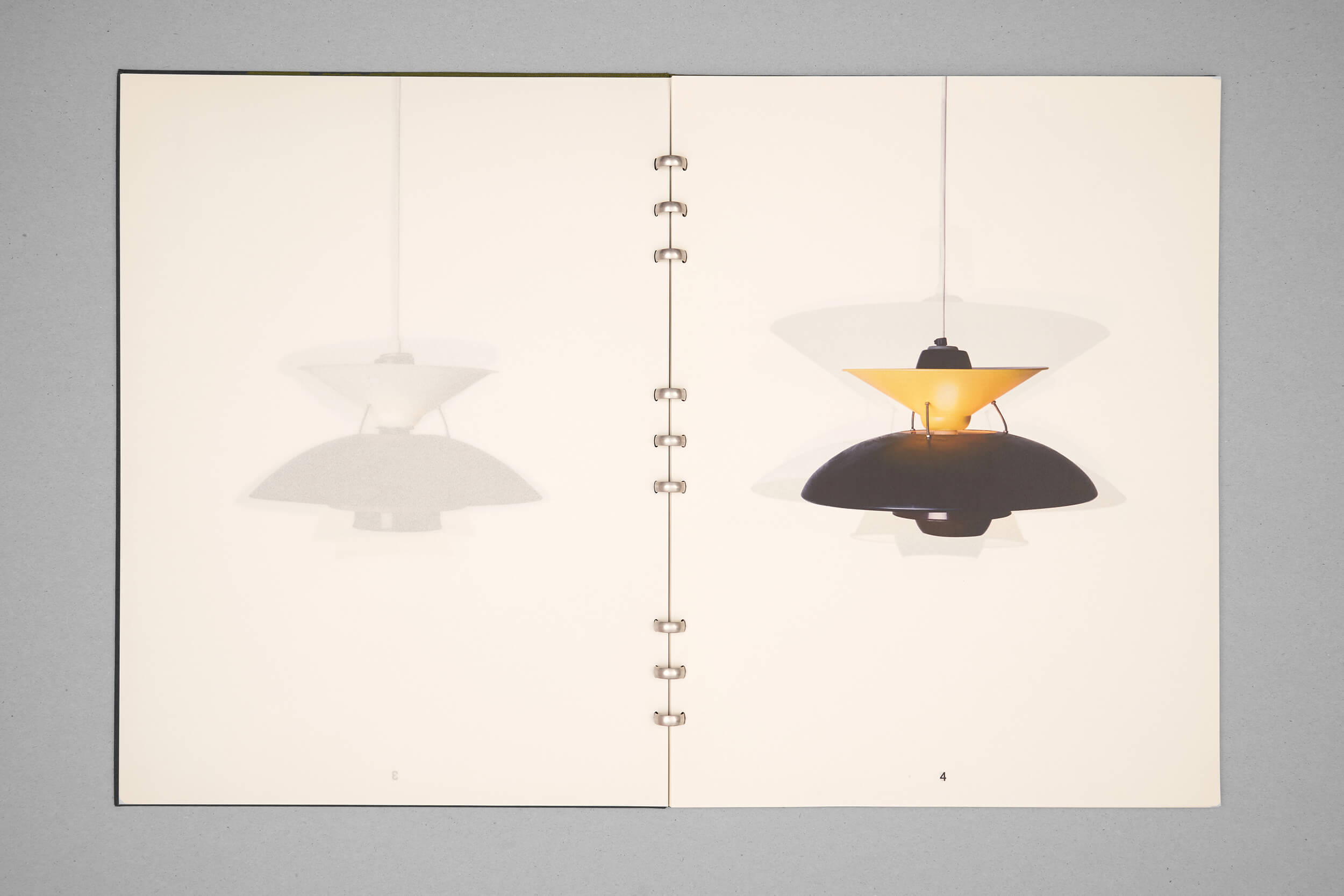

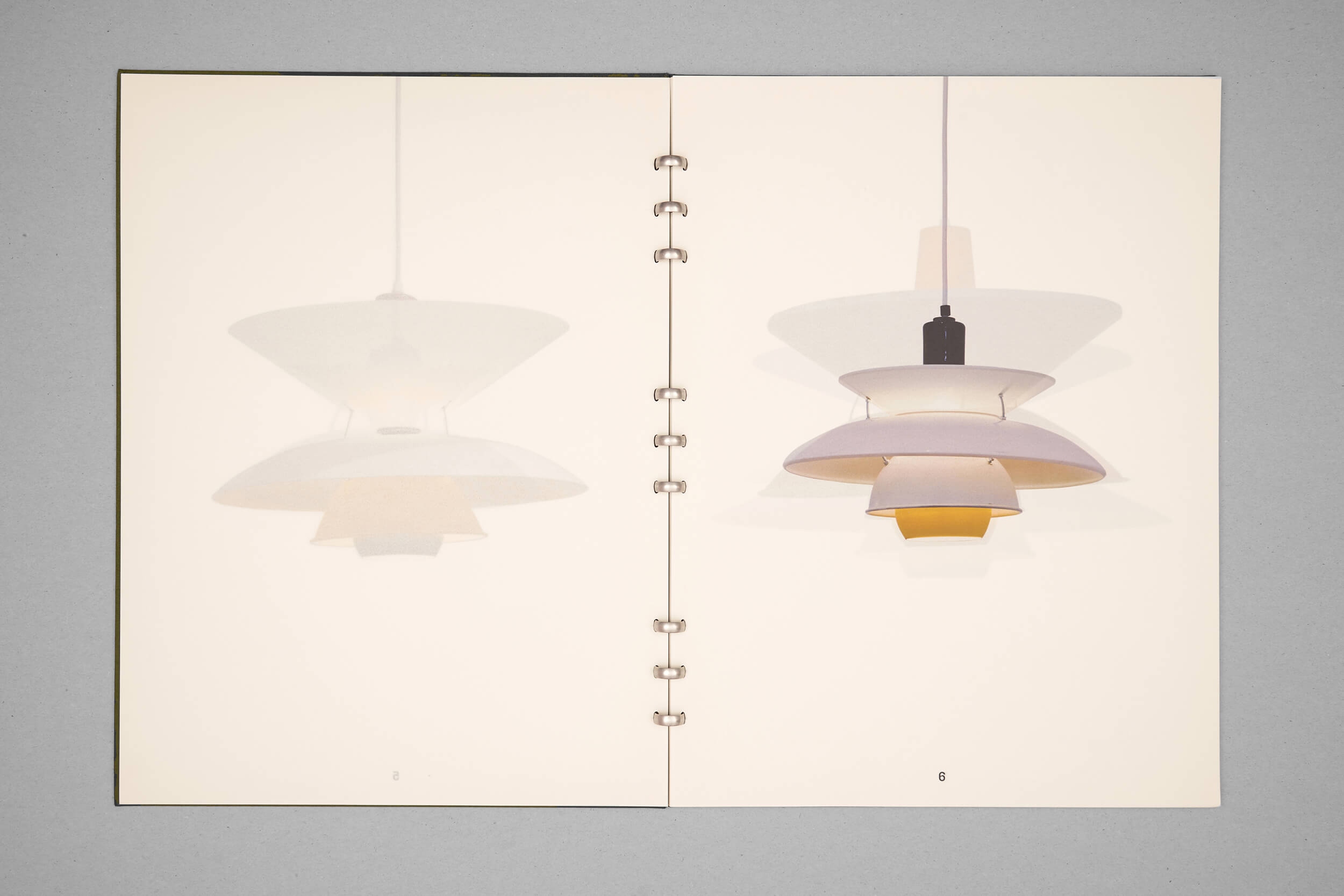



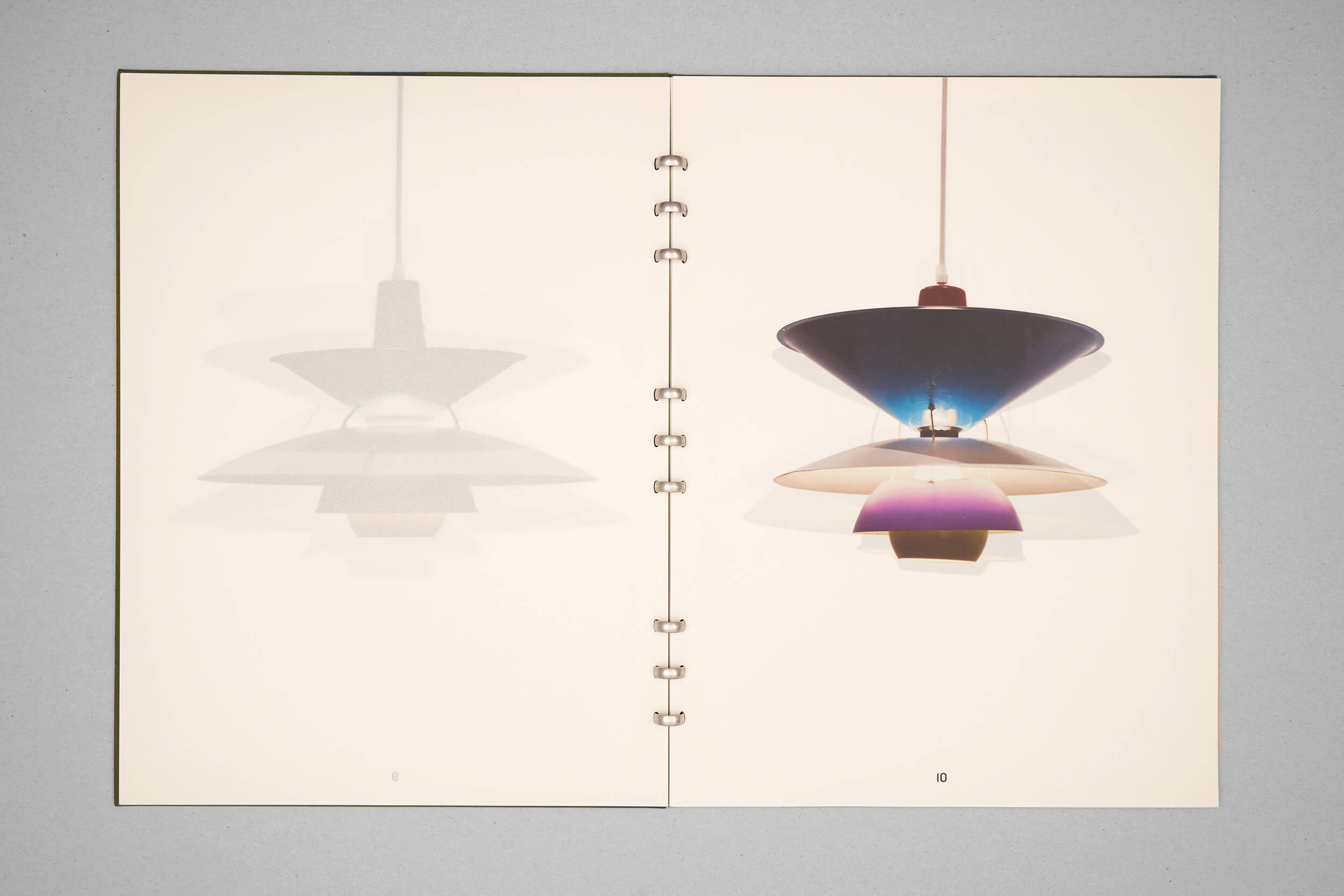
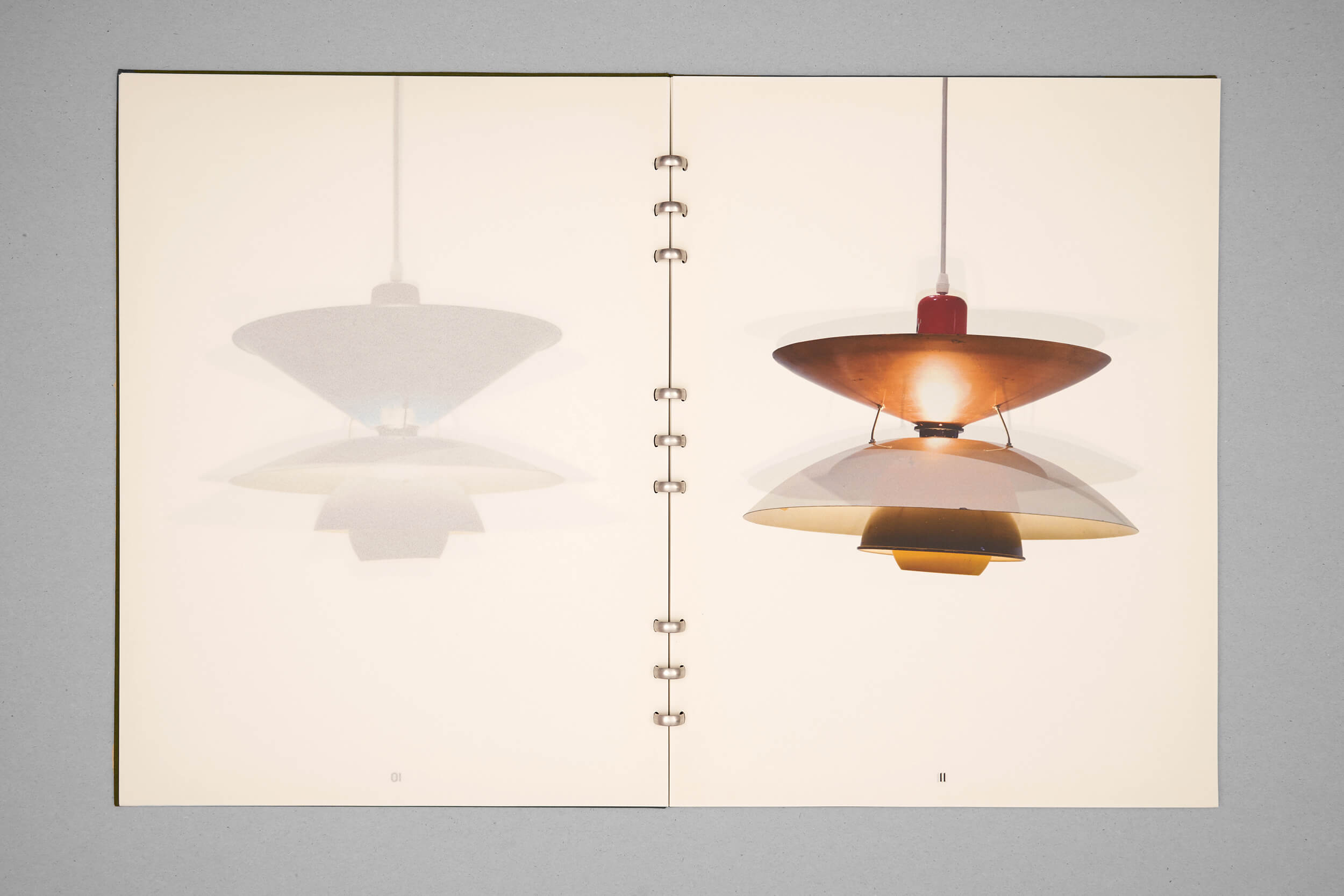

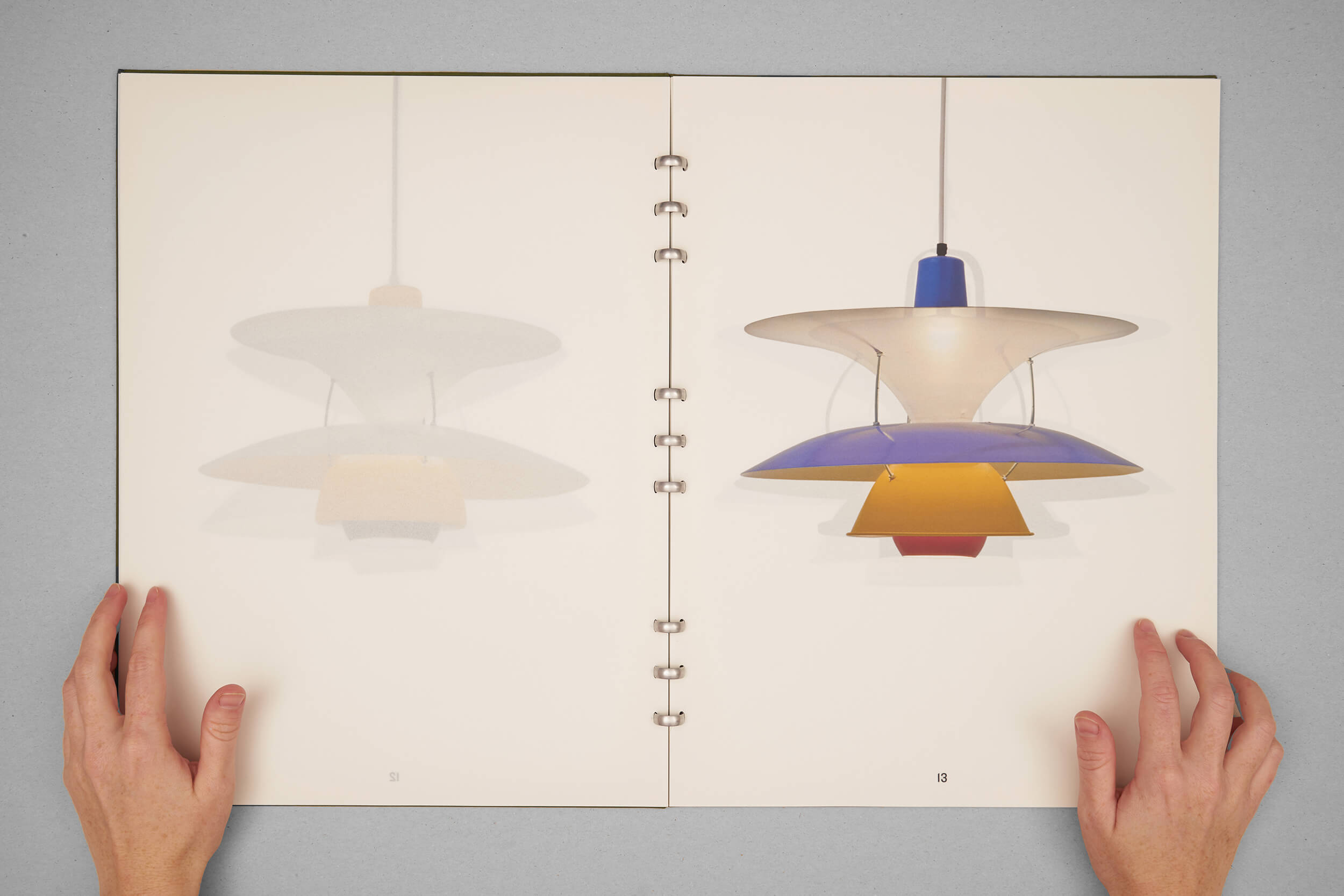
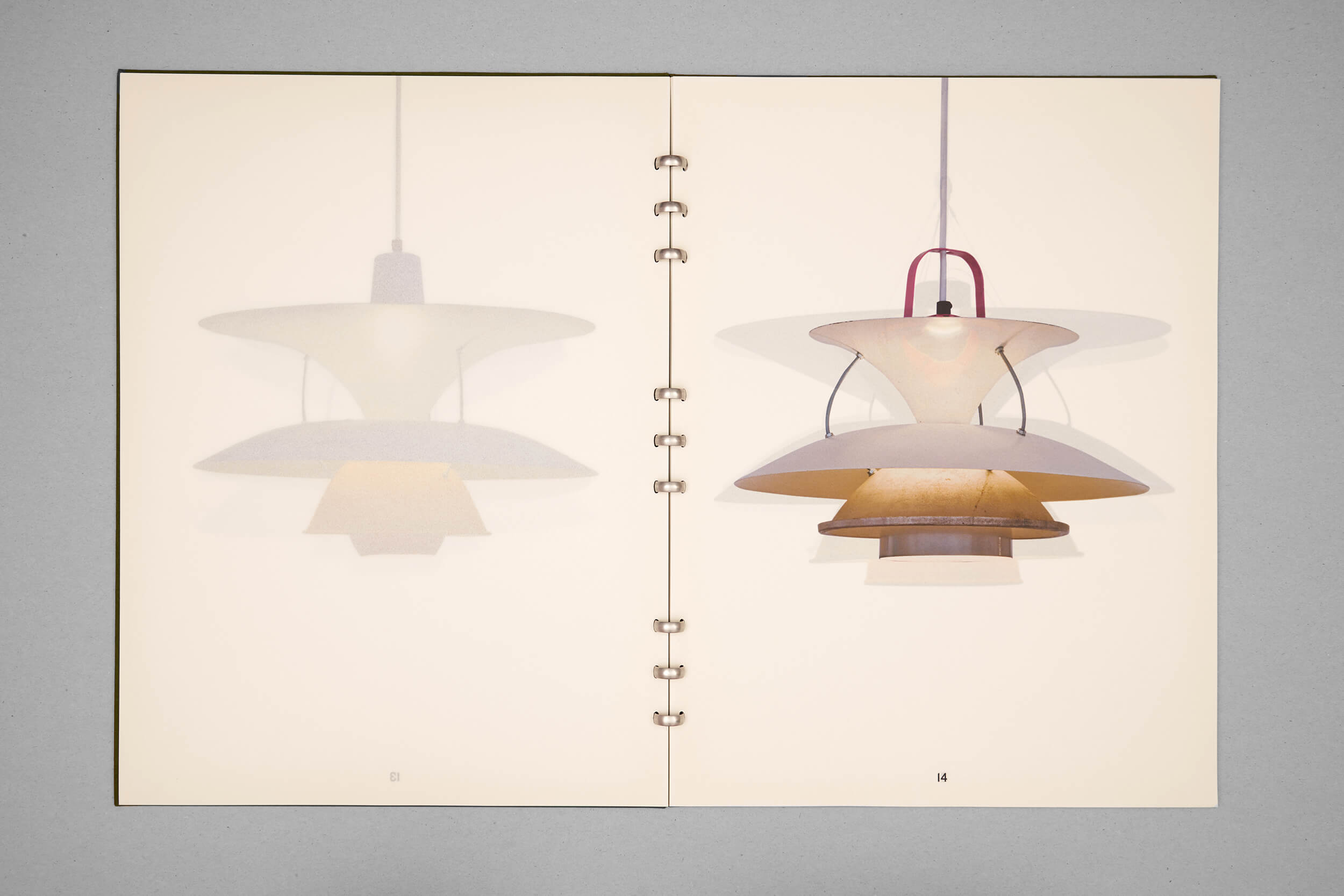
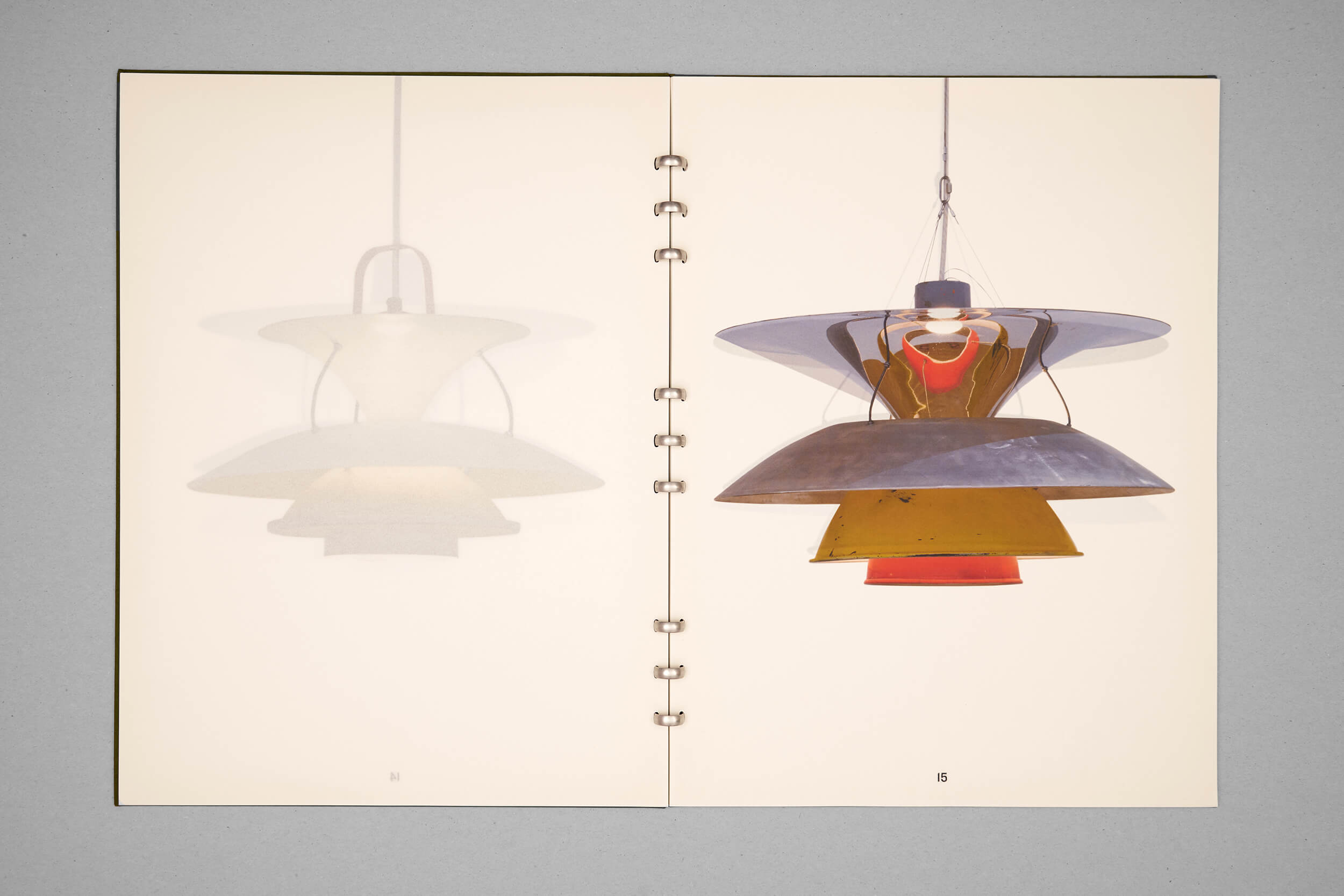
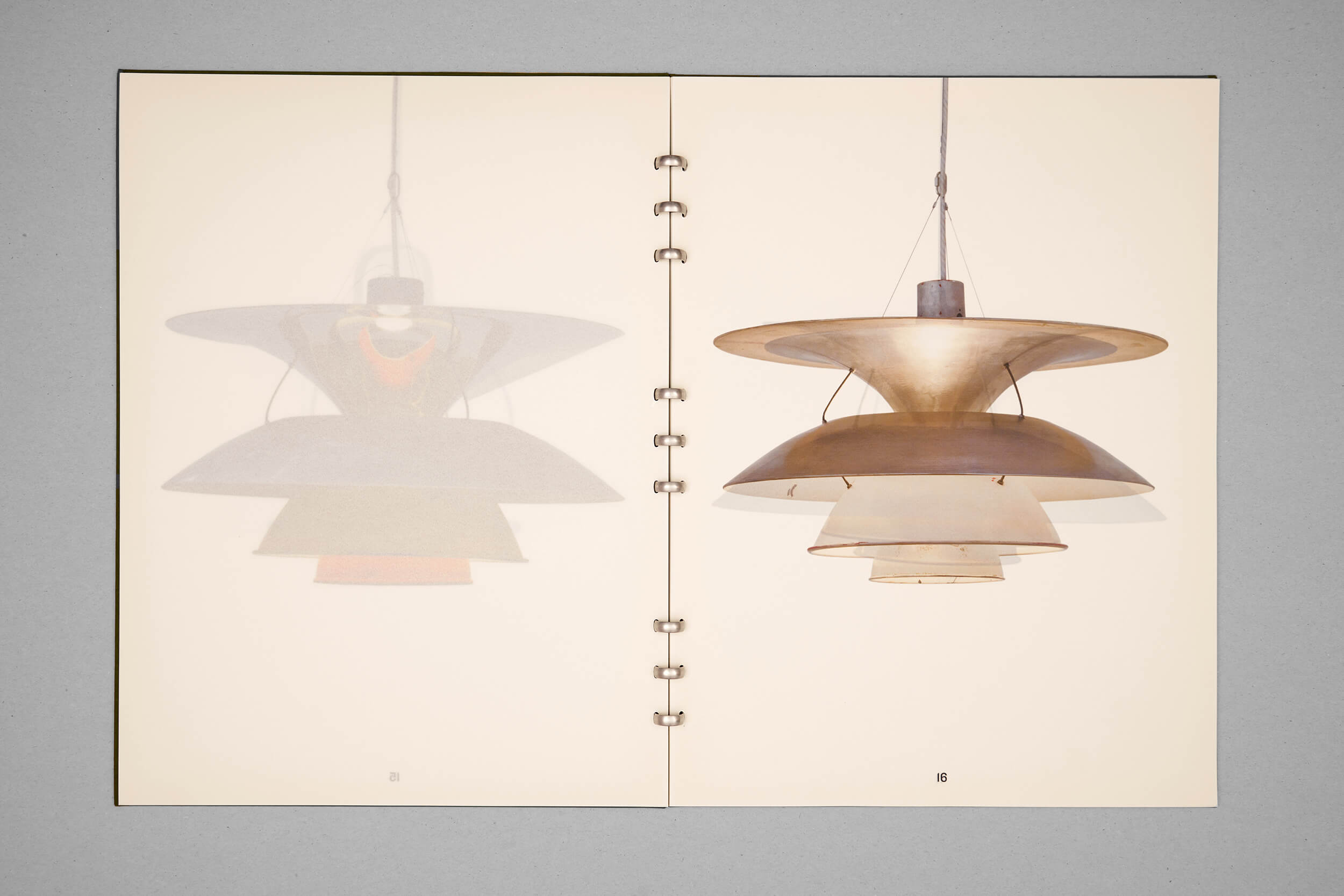

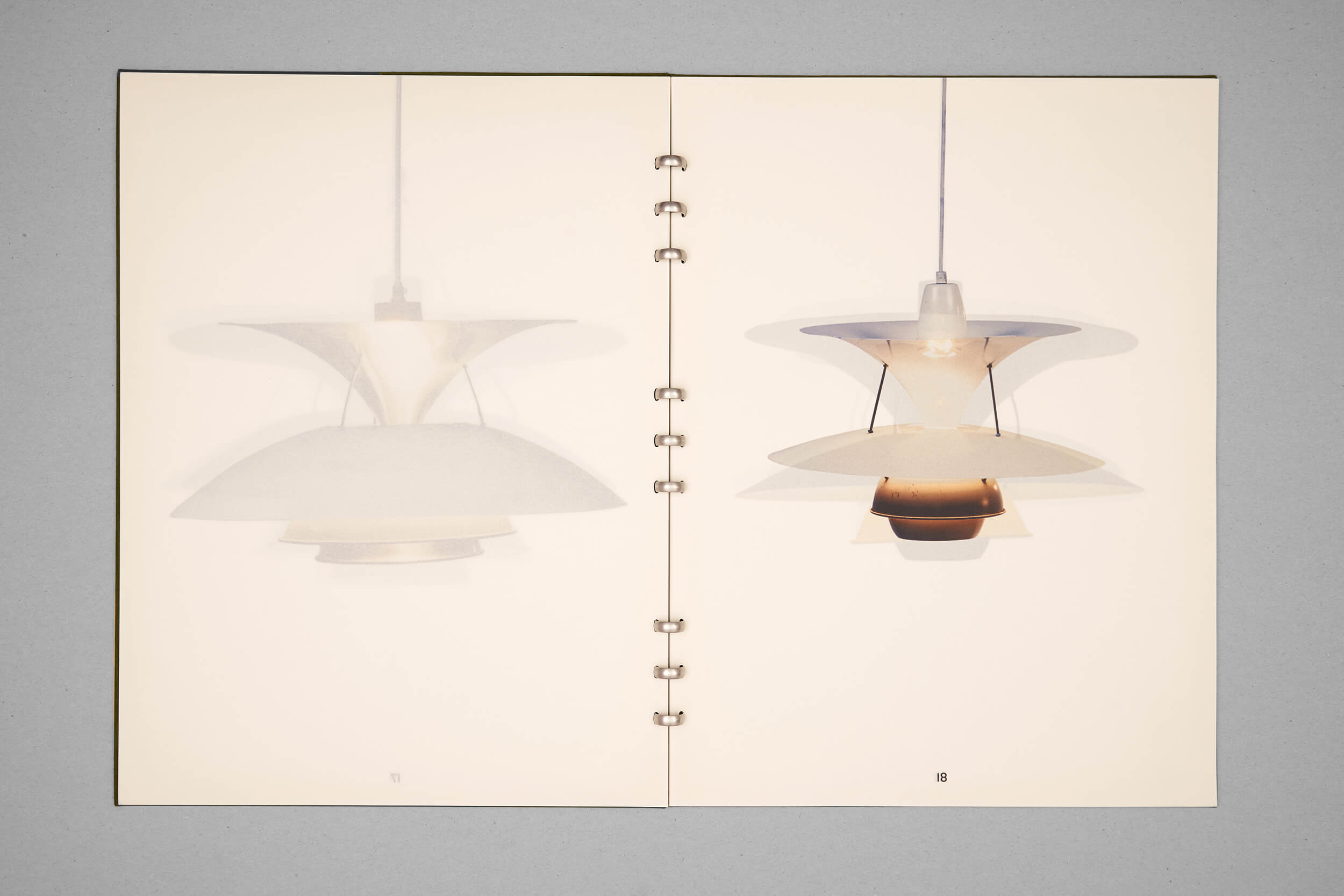


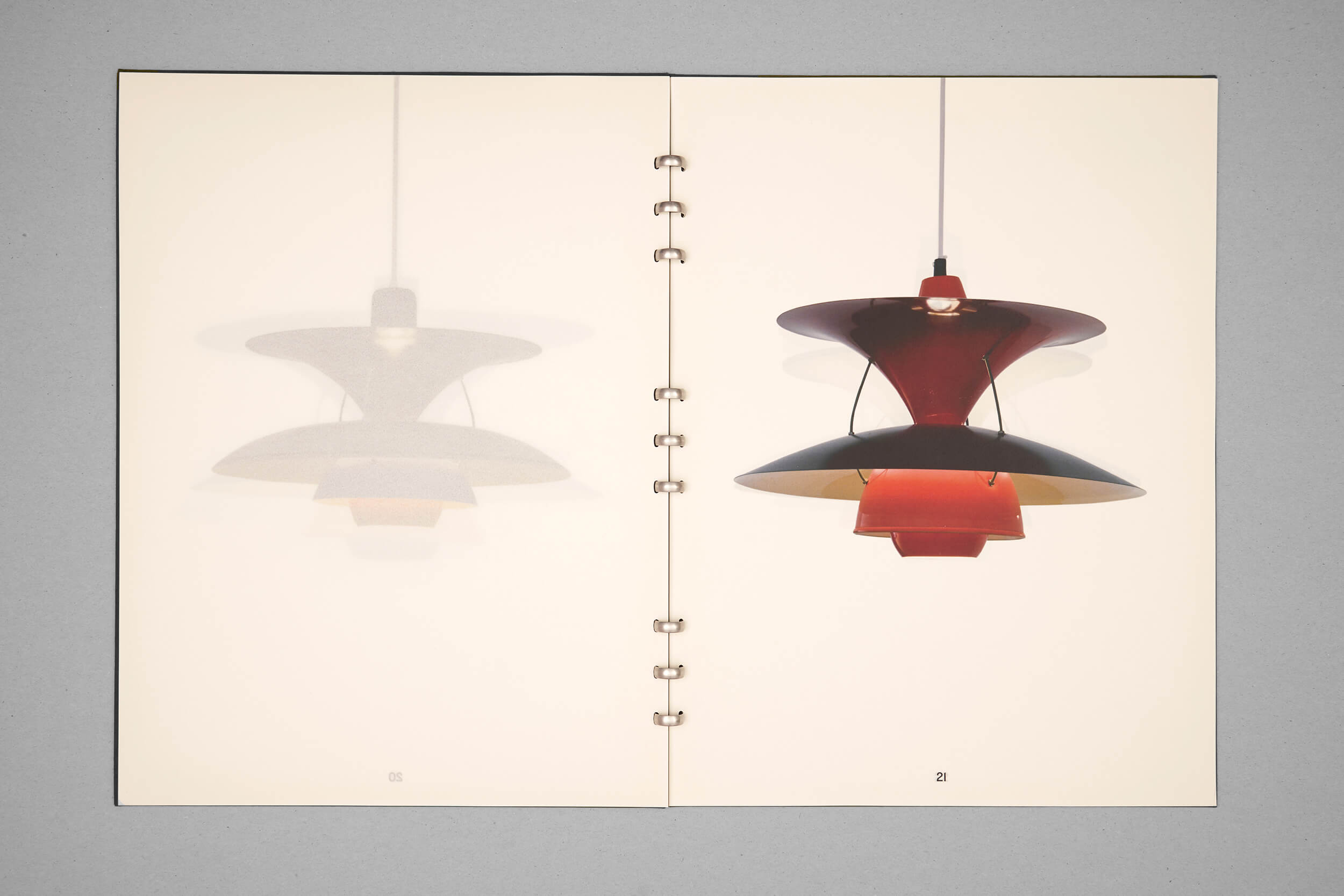



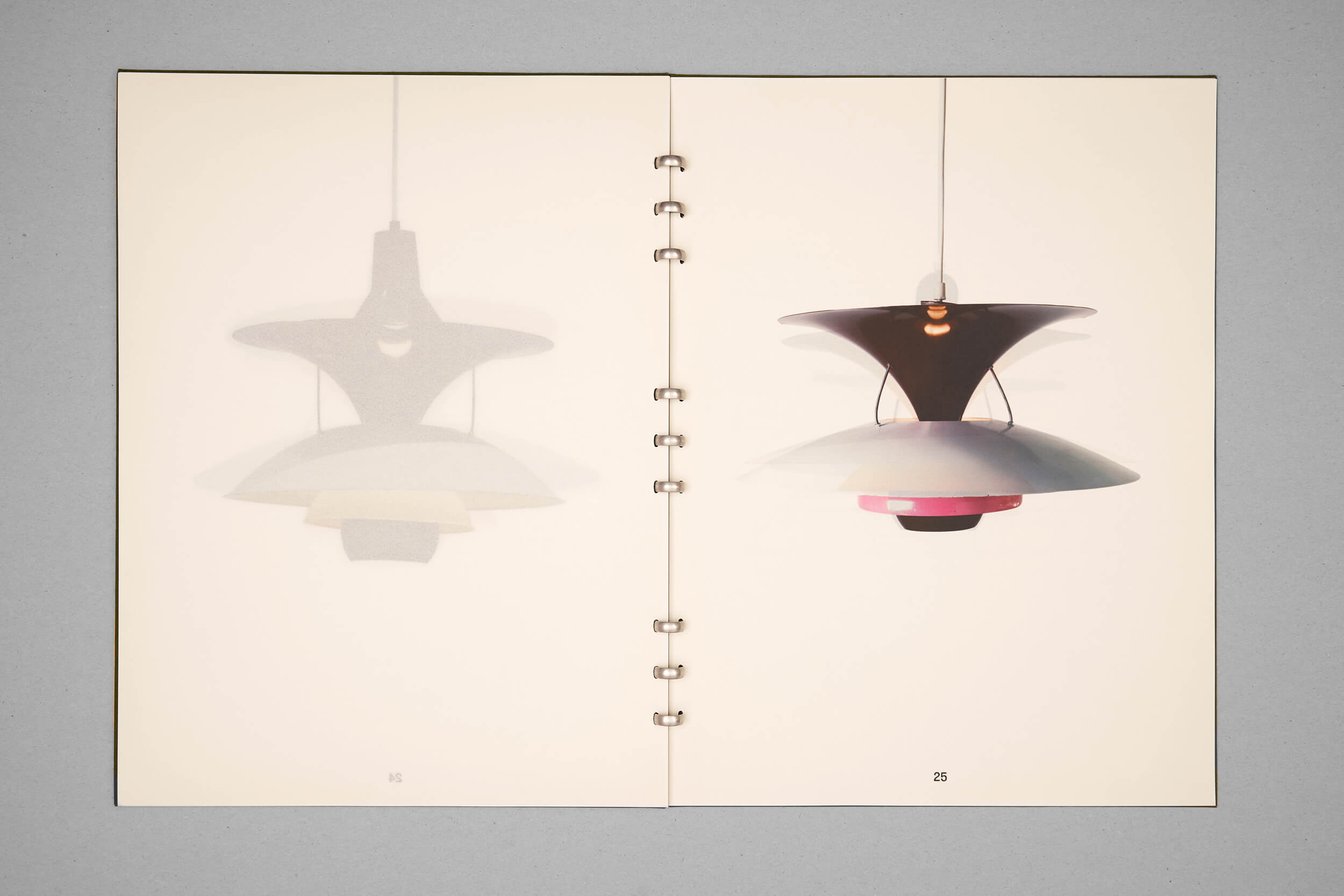
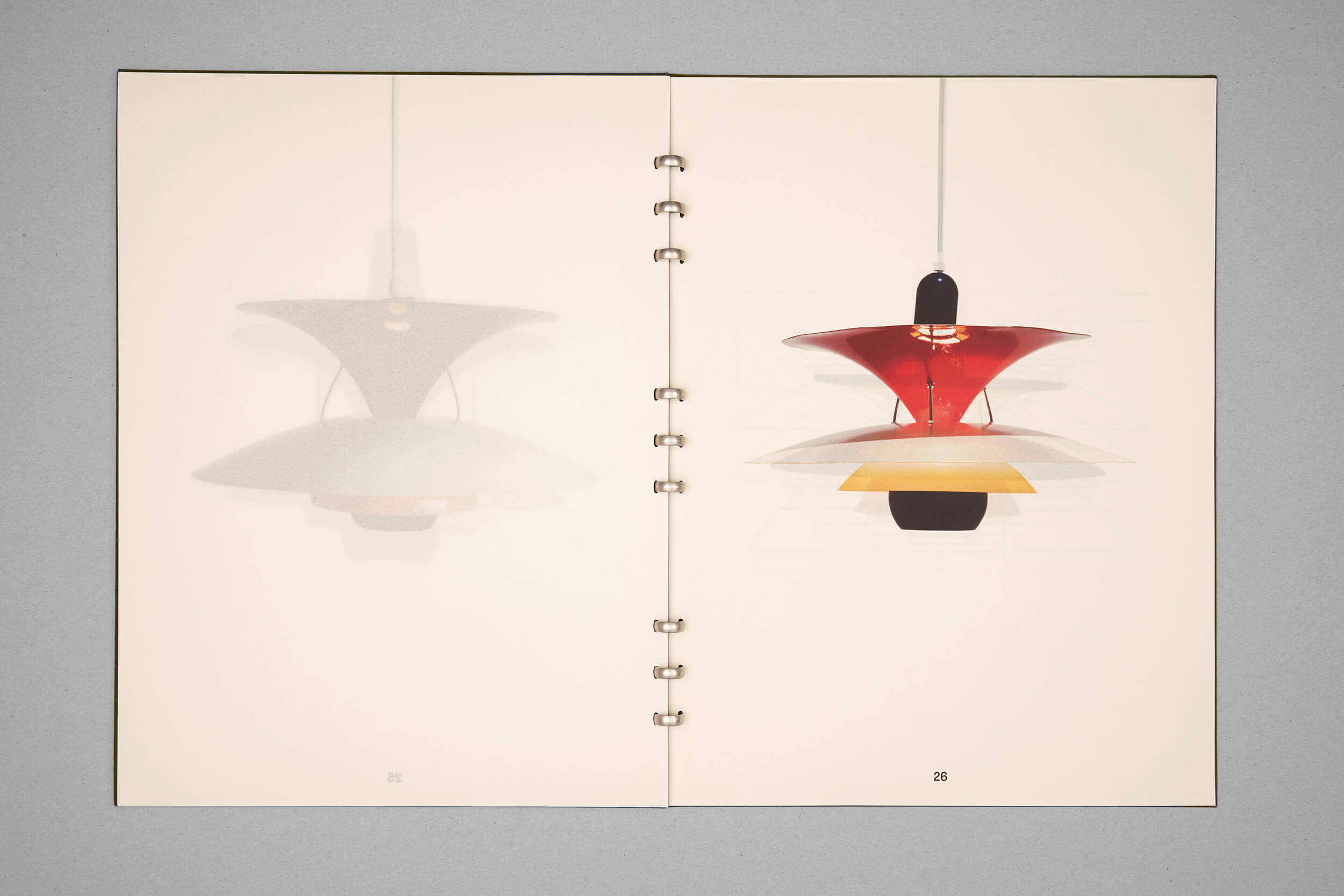
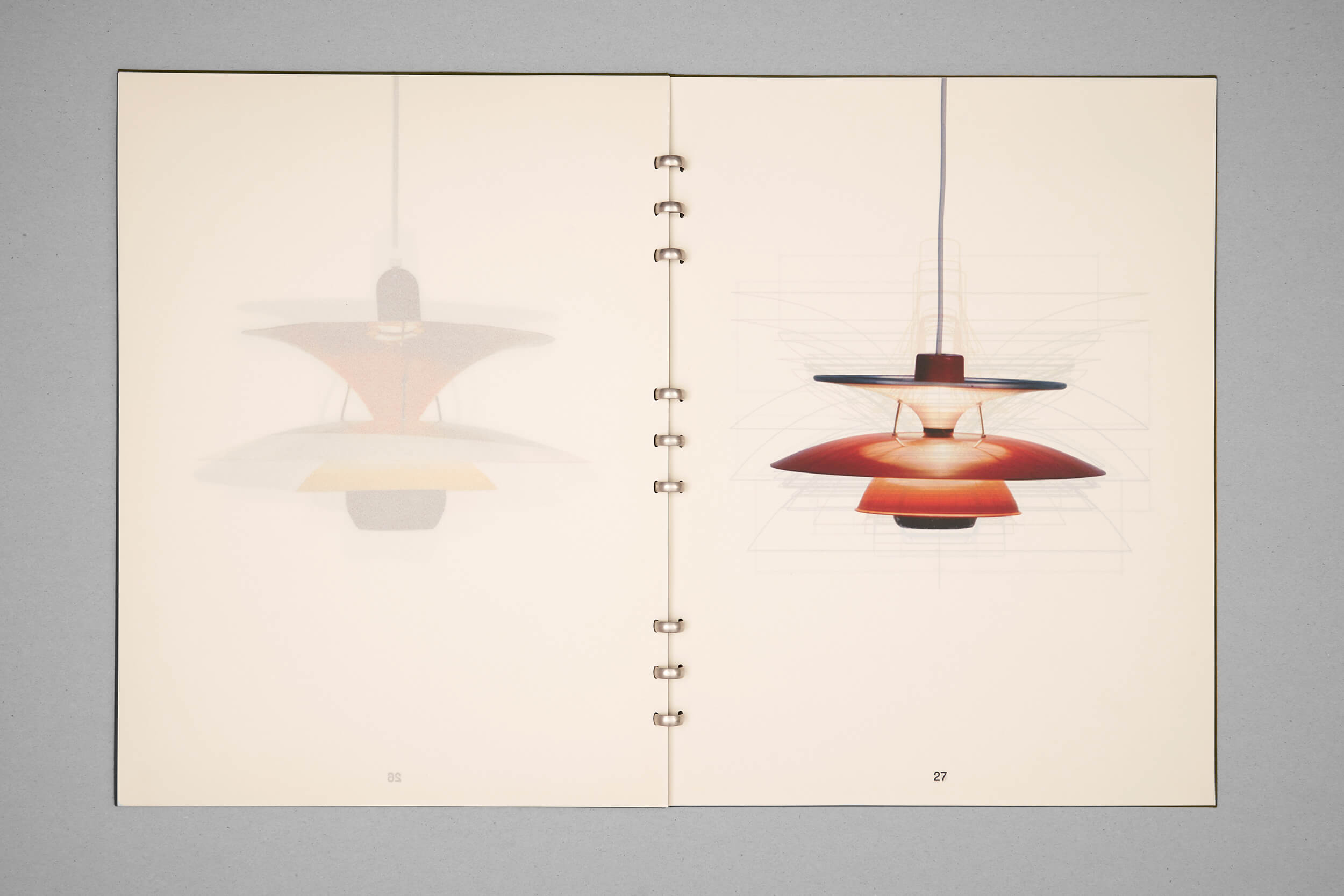
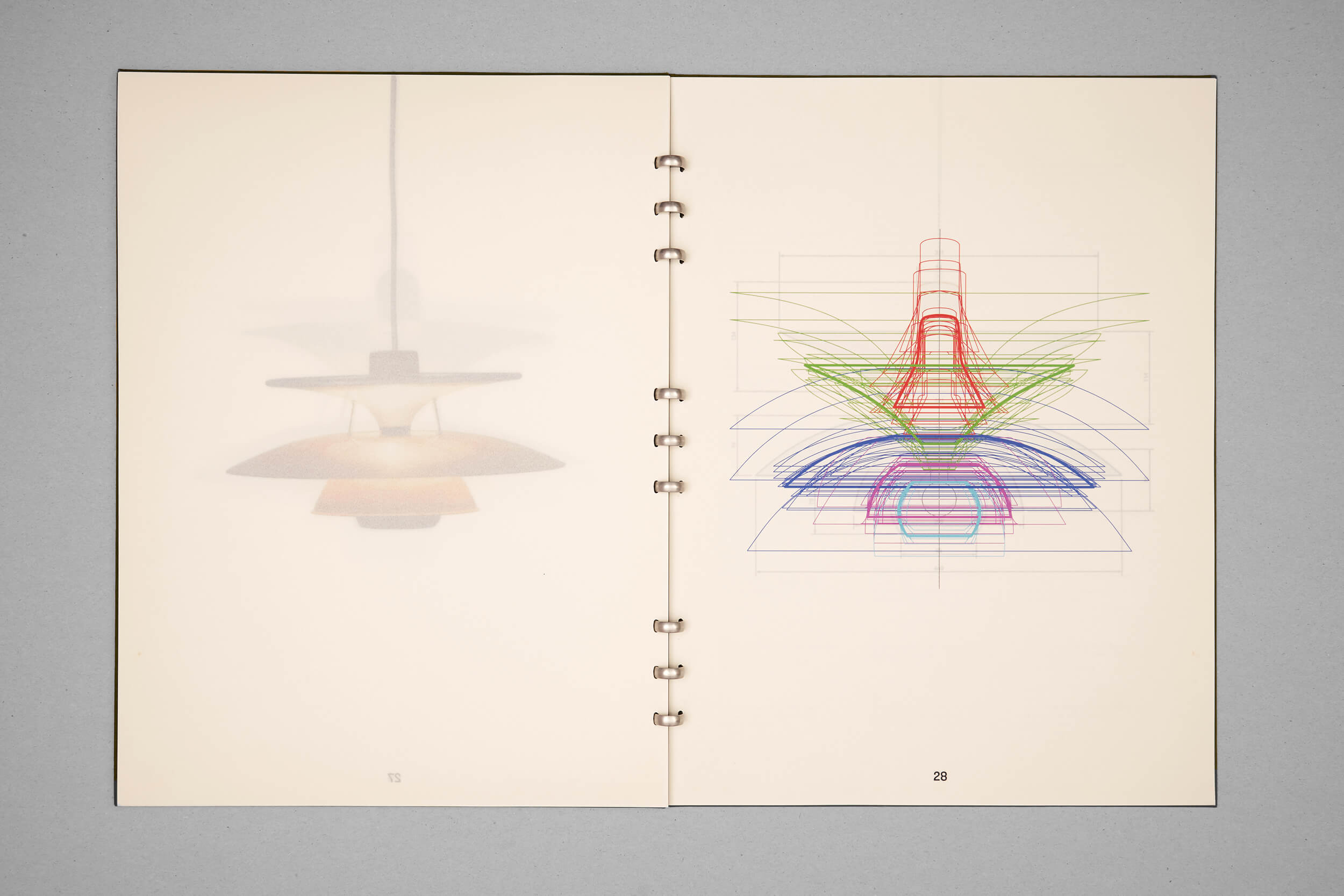
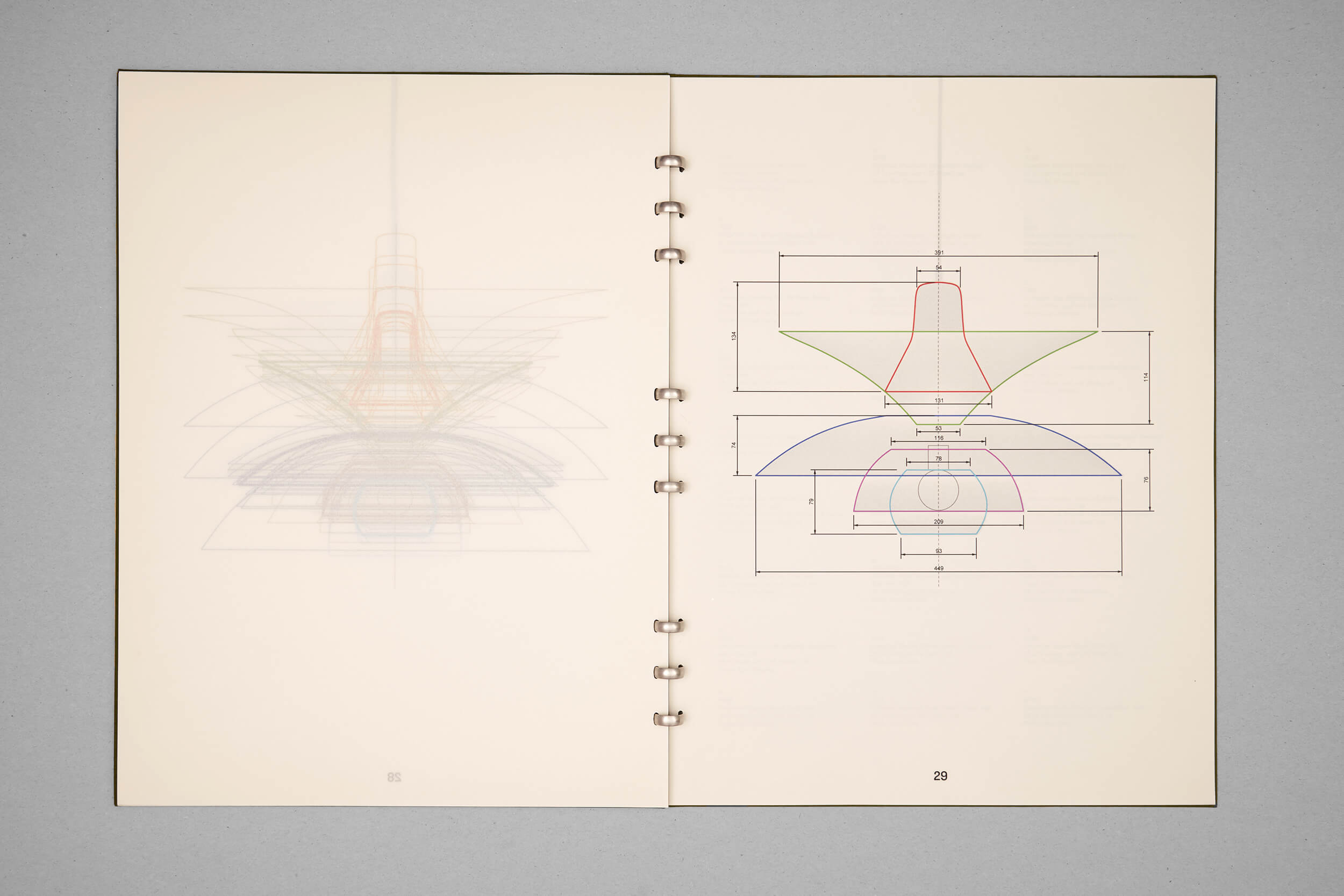
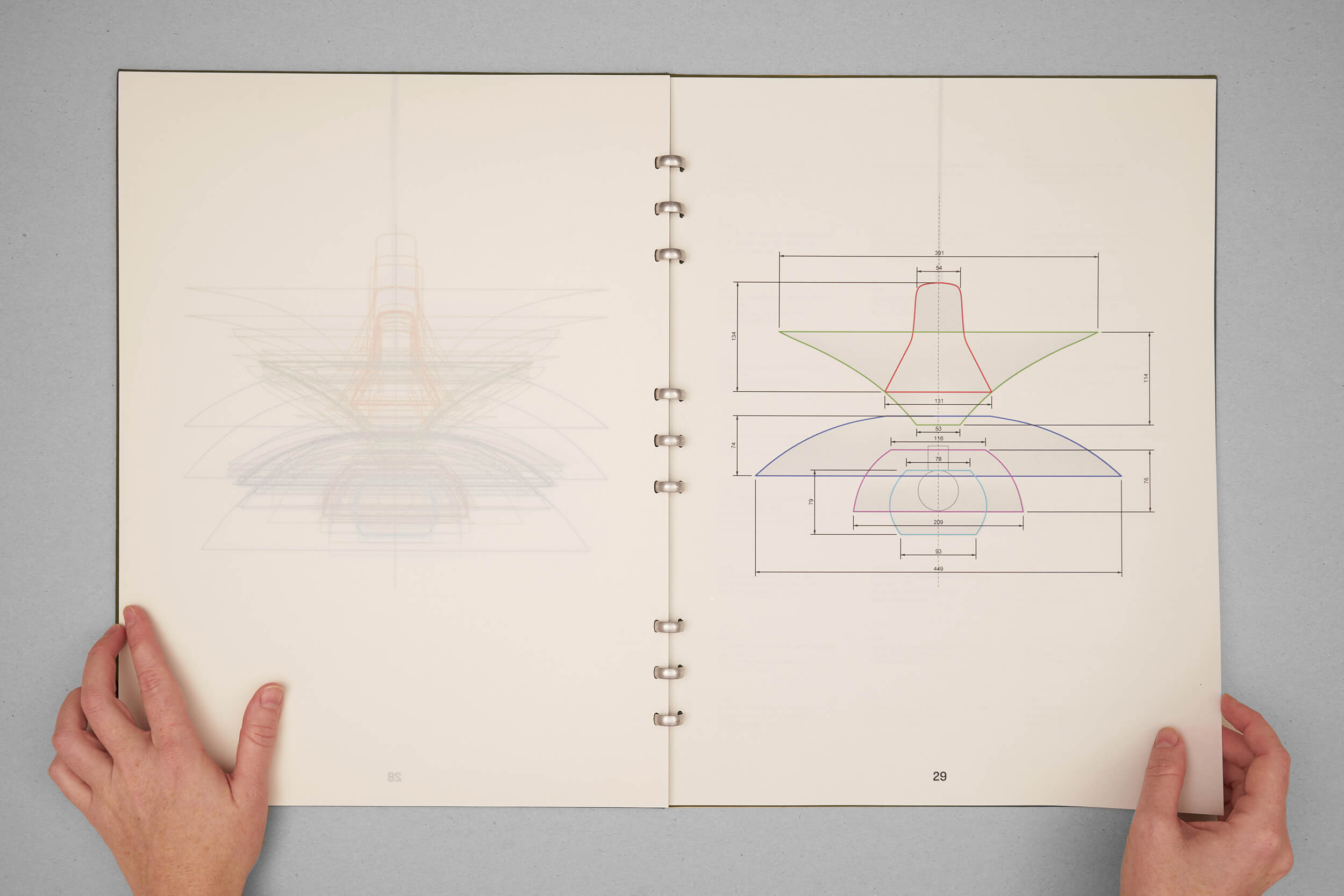


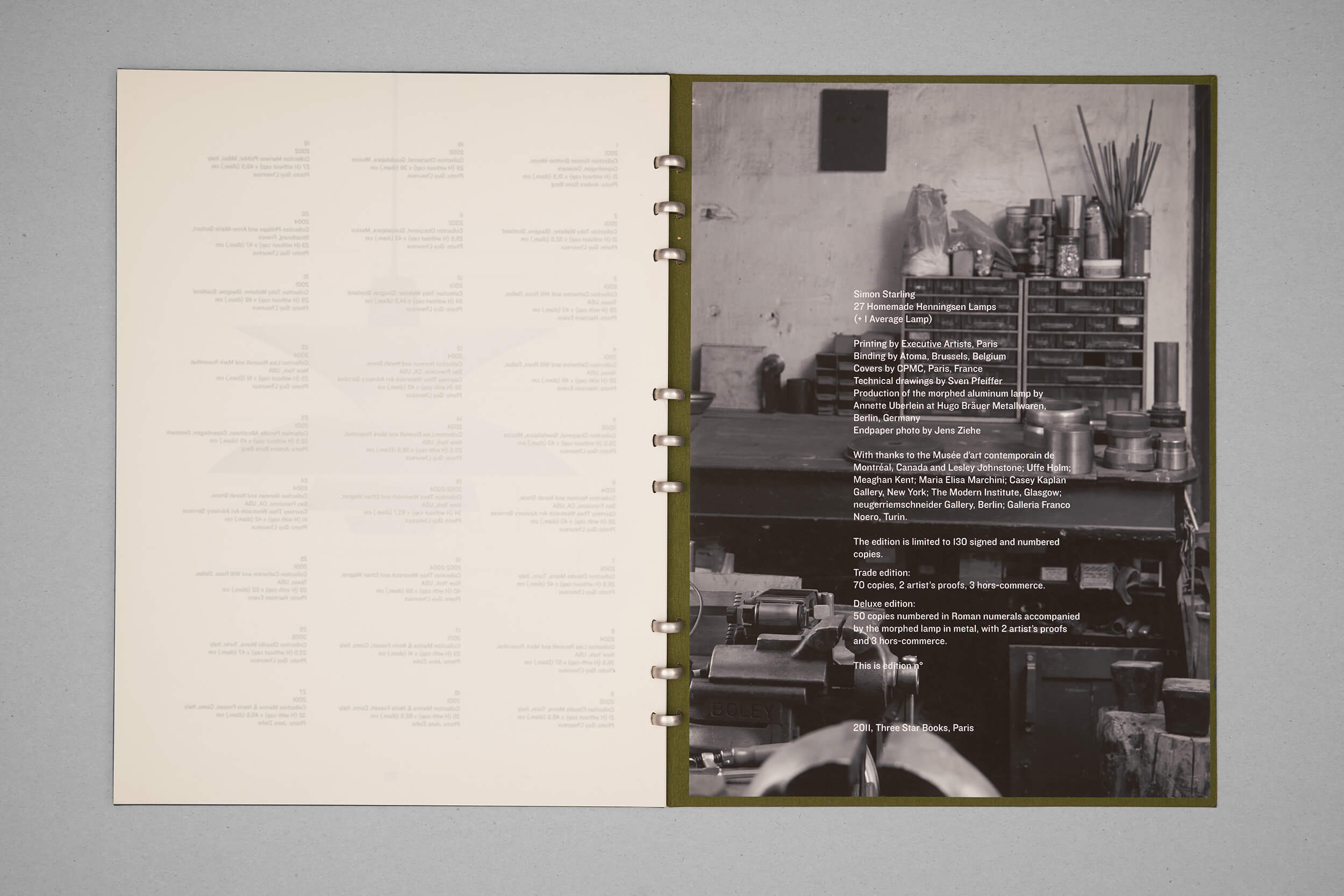



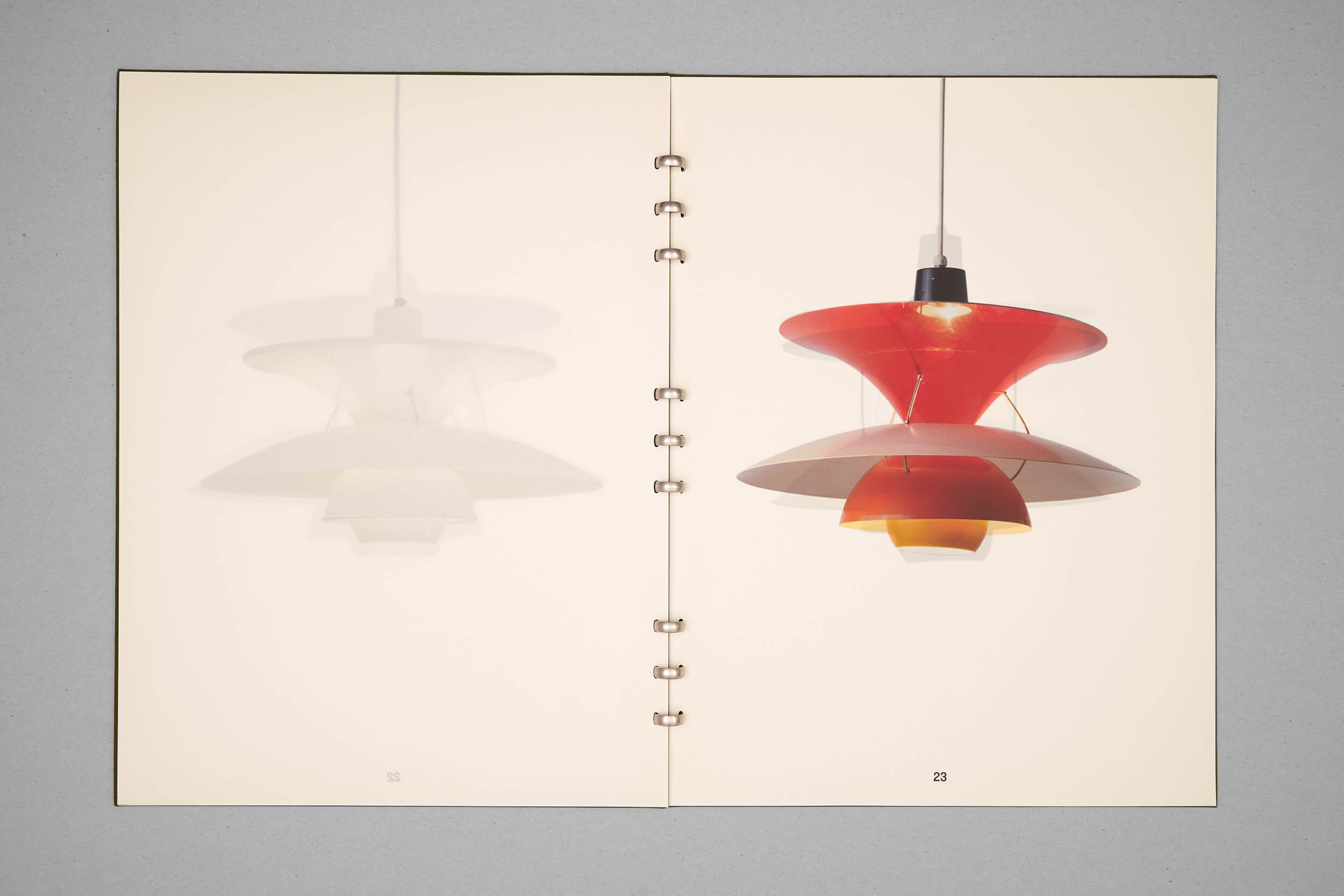





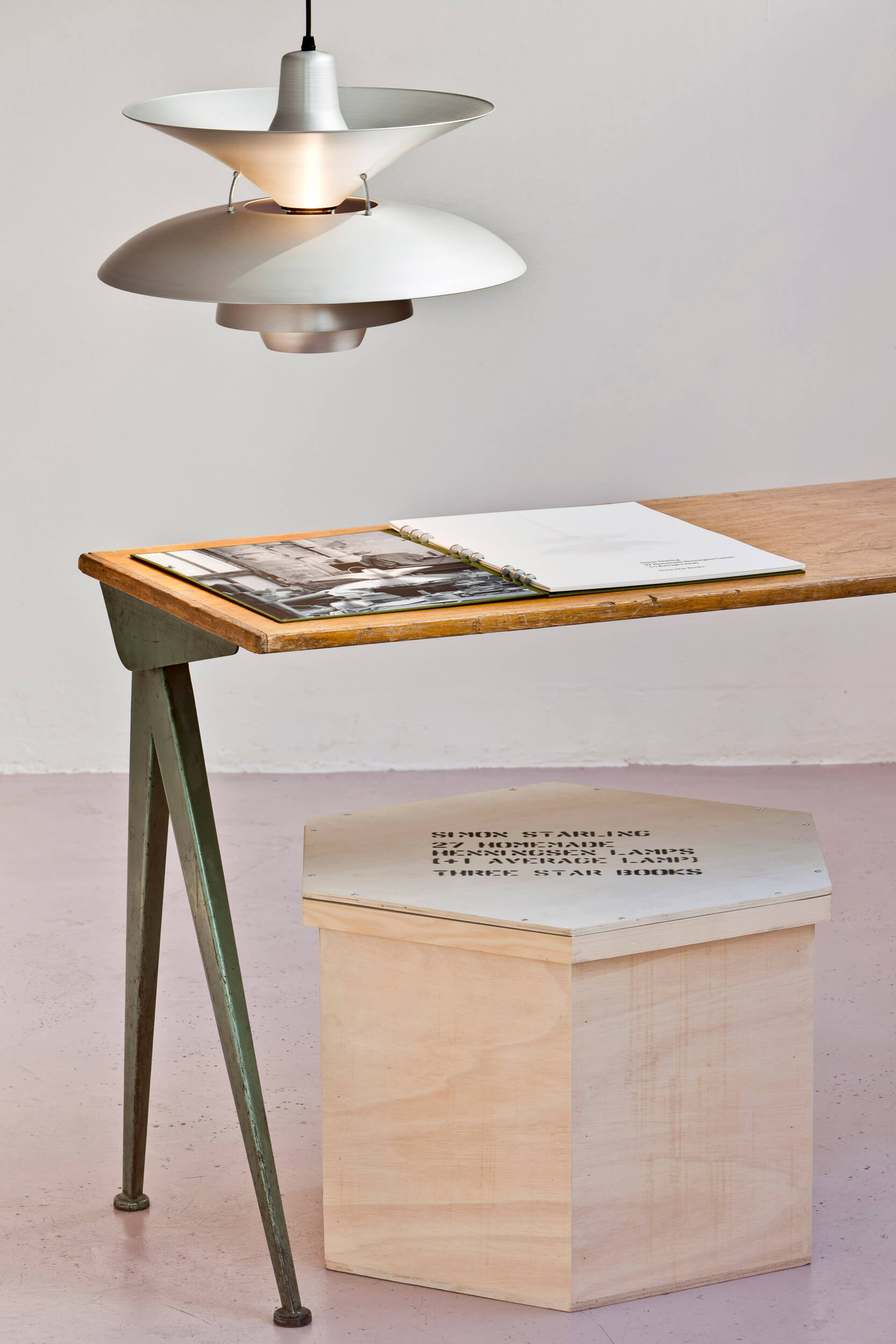
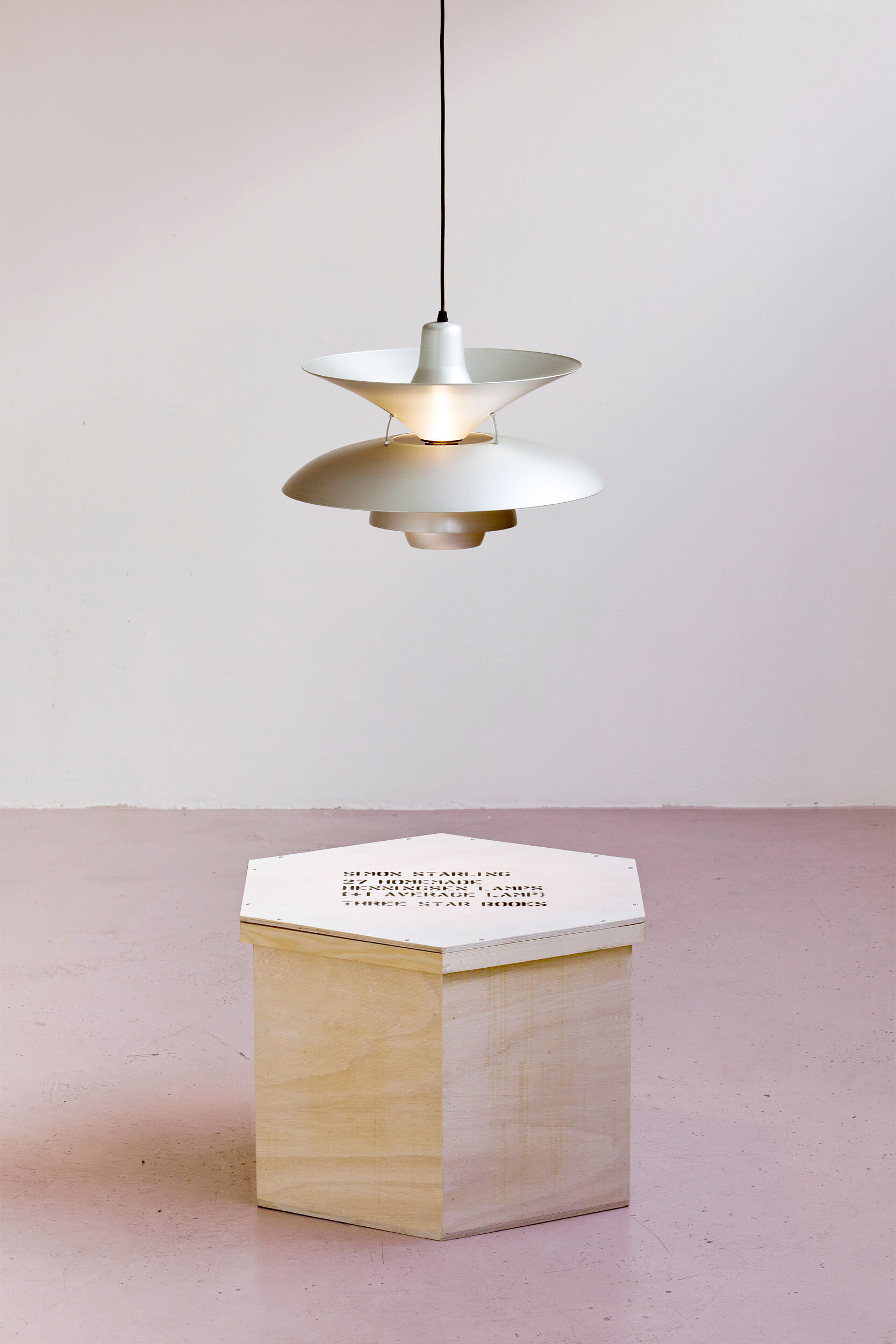
In “27 Homemade Henningsen Lamps (+ 1 Average Lamp)” Simon Starling exposes aesthetics to mathematics in a whimsical project with cast-iron logic. Over the course of several years, Starling produced a number of homemade versions of one of Modernism’s most characteristic lamps, Poul Henningsen’s PH5. The original lamp consists of a series of overlapping metal shades that produce an elegant yet unmistakably period-looking light fixture. In twenty-seven versions of this design classic, assembled from elements found in junk shops and flea markets, including metal lampshades, and the occasional cooking pot lid or wok, Starling approximated the beauty and balance of the original lamp. As Starling himself has stated: “Each Homemade Henningsen Lamp stands as a kind of retrospective prototype. As a group of related objects they are like a set of recurring ‘first thoughts’ for a much-celebrated lamp that already exists in mass production. Their construction, in the spirit of any prototype or model, is an attempt to ‘think with one’s hands’; to learn by doing.
The idea of reiterating or re-enacting the design process returns the object to a state of innocence, moving back in time to a moment when the lamp remained a speculative dream – a reverse shift from capital to potential.” At the end of the series, Starling decided to produce a lamp which would be the average of all the twenty- seven previous versions by generating a mean size and shape – an attempt to return to the mental image of the PH5 lamp that haunts the 27 improvised originals. He worked with a company of metal spinners in Berlin to produce his industrially made (though still artisanal) lamp.
The “average” version was generated by morphing images on computer which unified their often irregular shapes into a single 3D rendering which was then used to produce the wooden formers for spinning the various shades The deluxe version of this publication is accompanied by an Average Lamp both encased within a hexagonal wooden box.
Winner of the Turner Prize, Simon Starling (b. 1966) is one of the bright lights in European art. Part of this is due to his earnest desire to reverse centuries of colonialism and economic malfeasance stemming from the very cultural location he himself comes from. Many of his works address themes of trade, barter, and the transformation of material goods from one medium to another. This alchemical process has taken varied shapes, some of them very witty. He has worked with sheds that turn into boats that turn into sheds, with bicycles crossing deserts, with a boat that fed upon itself until it was nothing more than a few sticks of driftwood, leaving its two sailors in the sea, or with lamps of varying Modernist designs.
The telescopic meaning packages Starling creates often start with an economic, cultural, or design artifact, which is then layered with forms, each of which tells a further story. His deft swiping of icons of design is an utterly contemporary idiom unique to Starling's generation.
The idea of reiterating or re-enacting the design process returns the object to a state of innocence, moving back in time to a moment when the lamp remained a speculative dream – a reverse shift from capital to potential.” At the end of the series, Starling decided to produce a lamp which would be the average of all the twenty- seven previous versions by generating a mean size and shape – an attempt to return to the mental image of the PH5 lamp that haunts the 27 improvised originals. He worked with a company of metal spinners in Berlin to produce his industrially made (though still artisanal) lamp.
The “average” version was generated by morphing images on computer which unified their often irregular shapes into a single 3D rendering which was then used to produce the wooden formers for spinning the various shades The deluxe version of this publication is accompanied by an Average Lamp both encased within a hexagonal wooden box.
Winner of the Turner Prize, Simon Starling (b. 1966) is one of the bright lights in European art. Part of this is due to his earnest desire to reverse centuries of colonialism and economic malfeasance stemming from the very cultural location he himself comes from. Many of his works address themes of trade, barter, and the transformation of material goods from one medium to another. This alchemical process has taken varied shapes, some of them very witty. He has worked with sheds that turn into boats that turn into sheds, with bicycles crossing deserts, with a boat that fed upon itself until it was nothing more than a few sticks of driftwood, leaving its two sailors in the sea, or with lamps of varying Modernist designs.
The telescopic meaning packages Starling creates often start with an economic, cultural, or design artifact, which is then layered with forms, each of which tells a further story. His deft swiping of icons of design is an utterly contemporary idiom unique to Starling's generation.
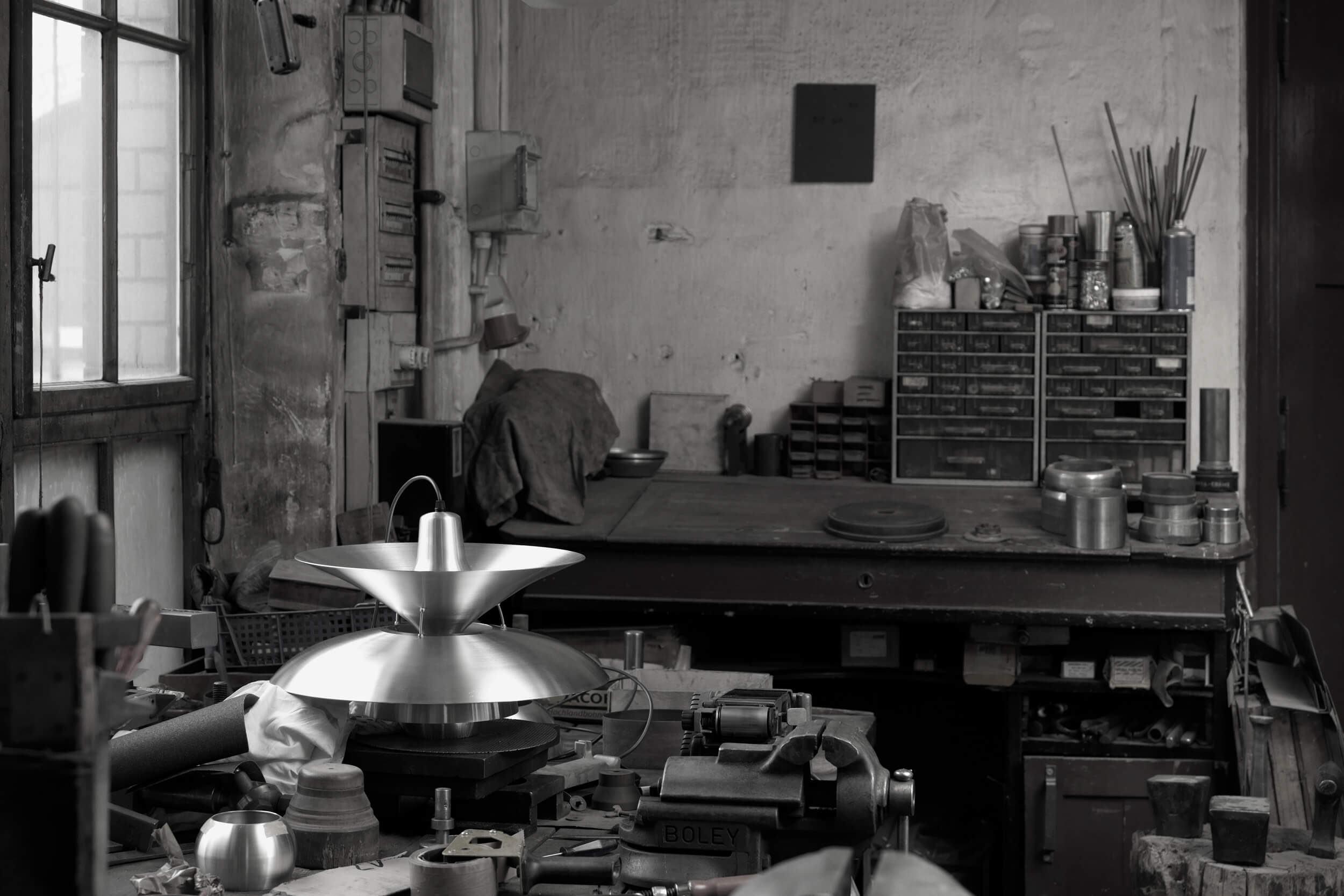



A the Berlin studio where the “Average Lamp” was produced. Photos: Jens Ziehe